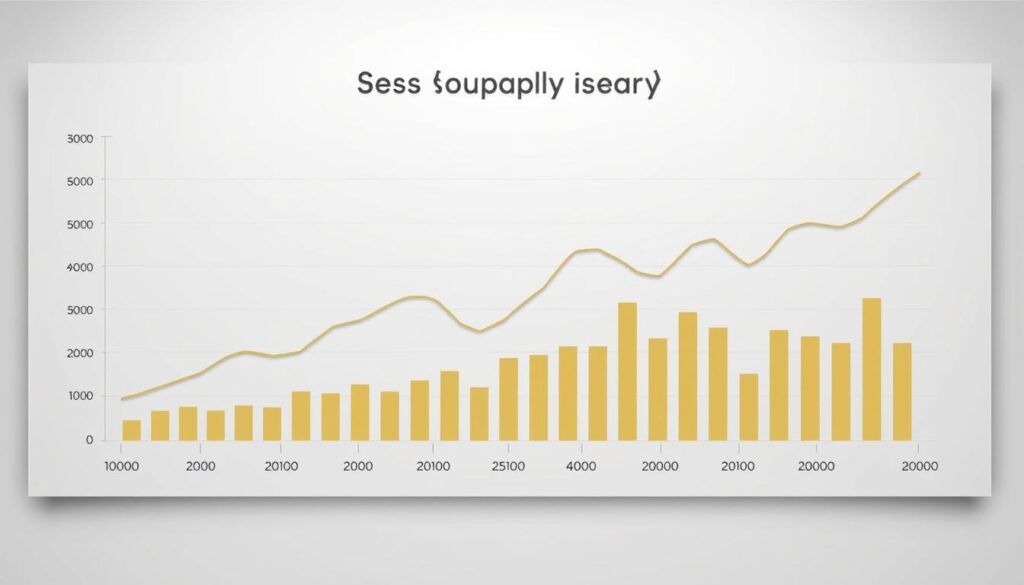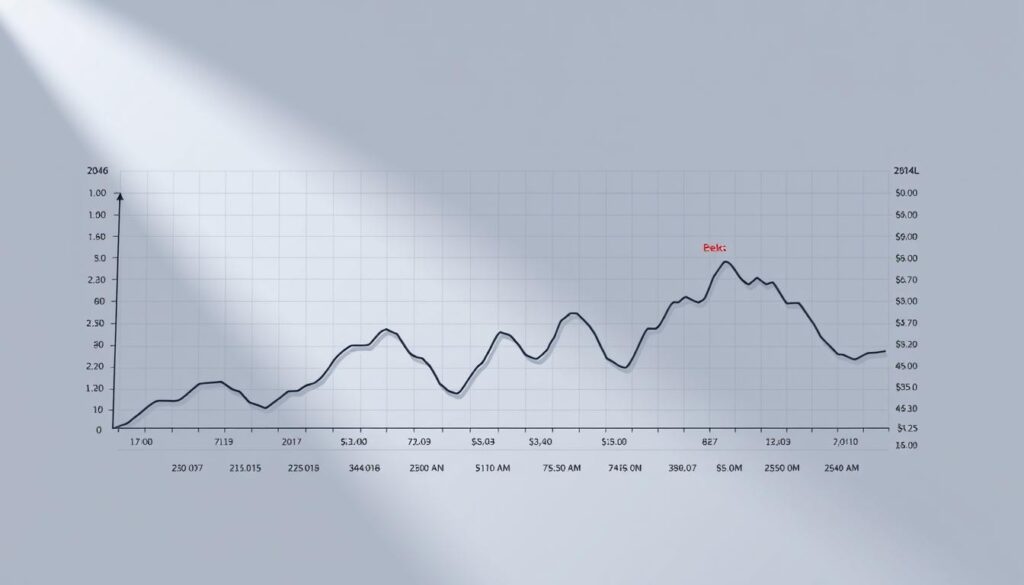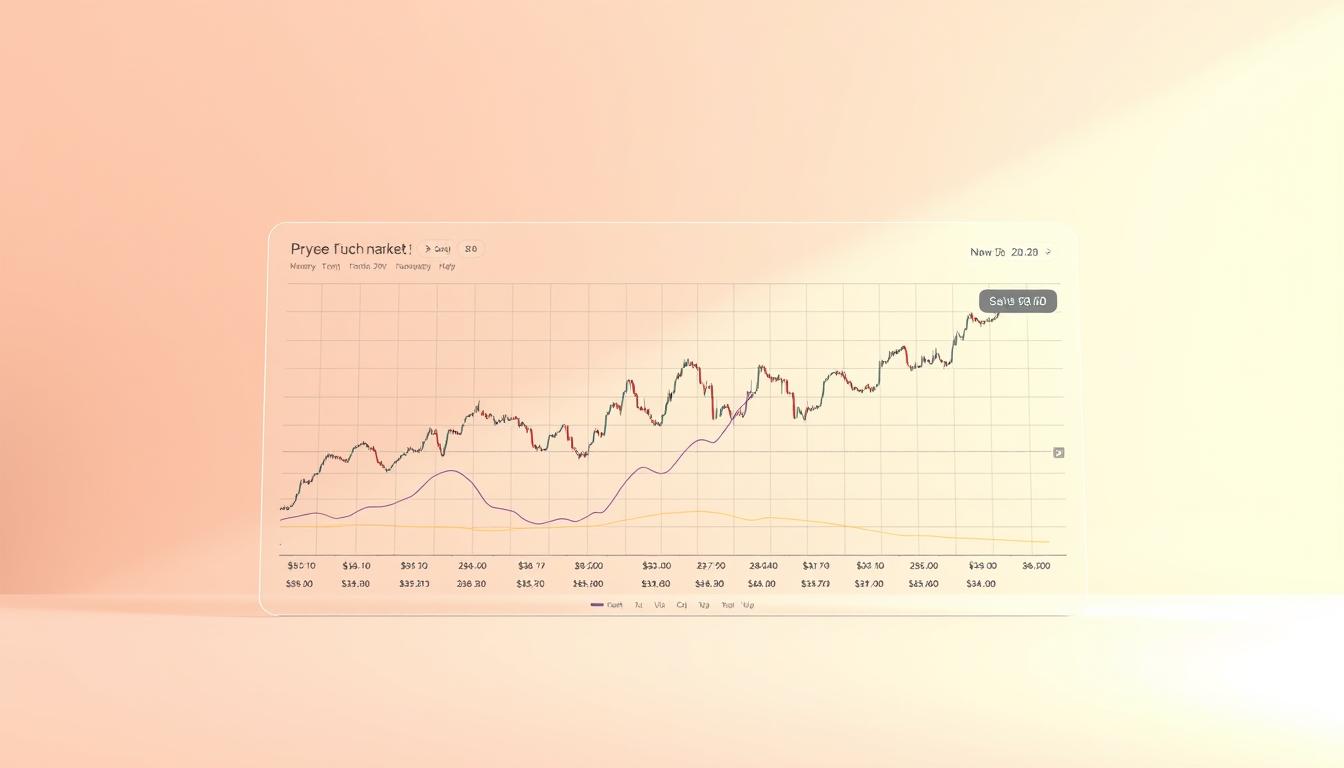Now Reading: Bitcoin Cycle Analysis Halving Effect Explained
- 01
Bitcoin Cycle Analysis Halving Effect Explained
Bitcoin Cycle Analysis Halving Effect Explained

Every four years, a significant programmed event resets the rules for the entire digital currency landscape. This occurrence, known as the halving, systematically cuts the reward for mining new blocks in half. It was designed by Satoshi Nakamoto to control inflation.
The most recent bitcoin halving took place on April 20, 2024. It reduced the block reward from 6.25 to 3.125 units. This creates artificial scarcity, much like precious metals. The entire crypto market pays close attention when this happens.
History shows that these events have often preceded major bull runs. The reduction in new supply can put upward pressure on the asset’s price. Understanding this mechanism is crucial for anyone involved in the space, from miners to long-term investors.
Understanding Bitcoin Halving: Historical Context and Fundamentals
Built directly into the code of the world’s first cryptocurrency is a mechanism that periodically tightens the supply of new units. This process, a cornerstone of the digital asset’s economic policy, occurs approximately every four years. It is one of the most predictable events in the entire digital asset space.
What is Bitcoin Halving?
The bitcoin halving is a fundamental rule of the network. It automatically cuts the block reward for miners by 50%. This happens every 210,000 blocks.
Miners use powerful computers to solve complex puzzles. They secure the blockchain and process transactions. Their compensation includes newly created bitcoins.
This scheduled reduction is a deflationary mechanism. It controls the inflation rate by slowing down the creation of new coins. The total supply is capped at 21 million.
Timeline of Past Halving Events
History provides a clear record of these significant halving events. The following table details the dates and resulting rewards for each occurrence.
| Event | Date | Reward After Halving |
|---|---|---|
| First Halving | November 28, 2012 | 25 BTC |
| Second Halving | July 9, 2016 | 12.5 BTC |
| Third Halving | May 11, 2020 | 6.25 BTC |
| Fourth Halving | April 20, 2024 | 3.125 BTC |
These halvings have consistently reduced the flow of new coins. The next reduction is projected for around 2028. The reward will drop to 1.5625 bitcoins per block at that time.
Impact of Halving on Bitcoin Supply and Scarcity
The scheduled reduction in block rewards fundamentally alters the economics of the digital asset. This event directly impacts the available supply and enforces a programmed scarcity.

By May 2024, approximately 19.7 million units were in circulation. Only about 1.3 million remain to be created. This dwindling new supply is a key driver of value.
Mechanics of Block Reward Reduction
The core mechanism is straightforward. Every 210,000 blocks, the block reward for miners is cut in half.
This systematic reduction slows the creation of new coins. It is the primary anti-inflation feature of the Bitcoin network.
The following table shows how the issuance rate changes after each event.
| Halving Event | New Coins Per Day (Approx.) | Annual Inflation Rate Drop |
|---|---|---|
| Before 2024 Halving | 900 | ~1.7% |
| After 2024 Halving | 450 | ~0.85% |
Effects on Inflation and Miner Profitability
For the asset itself, the halving is a powerful deflationary tool. It cuts the rate of new coin creation by 50%.
This increasing scarcity, combined with steady or growing demand, can create upward price pressure.
For mining operations, profitability becomes a major challenge. Their reward is halved, but costs like electricity often remain high.
This economic pressure can lead to industry consolidation. Less efficient operators may exit, strengthening the overall network.
In-Depth Bitcoin Cycle Analysis Halving Effect: Price Impact and Market Reactions
Historical patterns reveal that significant appreciation tends to follow the network’s automatic reward reductions. The price impact of these events has captured attention across financial markets.

Historical Price Rallies After Halving
Each supply reduction has preceded substantial price movements. The 2012 event saw values climb from $12 to over $1,100 within a year.
Similar patterns emerged in 2016 and 2020. The digital asset reached new peaks approximately 12-18 months post-event. This consistent data provides valuable insights for market participants.
The 2024 reduction showed unique characteristics. Prices reached record highs before the actual event date. This suggests earlier market anticipation than previous cycles.
Investor and Speculator Perspectives
Market participants view these events as potential opportunities. The combination of reduced supply and growing demand creates favorable conditions.
However, outcomes remain uncertain. Each cycle brings different macroeconomic factors. Investors must consider regulatory developments and overall sentiment.
The value proposition attracts both long-term holders and short-term traders. Price volatility around these periods requires careful strategy planning.
Role of Mining: From Miners to Market Consolidation
The economic landscape for miners transforms dramatically after each programmed supply reduction. Large-scale operations demonstrate strategic preparation through significant capacity expansion ahead of these pivotal moments.

How Reduced Rewards Affect Mining Operations
Electricity expense typically consumes 75-85% of a mining operation’s cash costs. Competitive firms secure power around $0.04 per kilowatt-hour to maintain viability.
Following the latest event, the top ten public miners faced all-in costs near $45,000 per BTC. This creates a critical profitability threshold that determines operational survival.
Case Studies of Major Mining Firms
Marathon Digital Holdings exemplifies strategic positioning before an upcoming reward reduction upcoming reward reduction. The company expanded its fleet to 231,000 units by February 2024.
This expansion boosted Marathon’s hash rate to 28.7 trillion hashes per second. That represented approximately 5% of the total network computing power.
Industry consolidation accelerates as smaller operations struggle with higher costs. Their equipment often gets acquired by larger players strengthening market dominance.
Publicly traded mining companies historically show strong recovery post-halving. Their equities frequently outperform the spot price during these periods.
Bitcoin Halving and Broader Crypto Market Trends
Alternative cryptocurrencies typically experience significant momentum shifts during these periods. The entire digital asset ecosystem responds to supply adjustments in the leading network.

Ripple Effects on Altcoins and Liquidity
Major alternative assets often see substantial trading volume increases. This occurred notably around the 2020 supply event. Capital rotation becomes a common pattern as traders seek higher returns.
Liquidity initially flows into the primary asset. Then it cascades into smaller, more volatile alternatives. This creates sector-wide momentum that can last over a year.
Macro Trends and Regulatory Impacts
Economic conditions significantly influence market outcomes. High inflation environments make scarce assets more attractive to investors. Expansionary monetary policies can amplify positive momentum.
Regulatory clarity plays a crucial role in capital flows. Recent approvals of exchange-traded funds created new demand channels. These developments alter traditional patterns and introduce fresh variables.
Trading Strategies Around Bitcoin Halving Events
Smart traders approach Bitcoin halving events with specific strategies to capitalize on predictable market patterns. These supply reductions create unique conditions that require careful planning and execution.
Historical data provides valuable insights for timing entries and exits. The months before these events often show consolidation phases, offering accumulation opportunities.
Managing Volatility with Historical Data Insights
Past cycles reveal that significant price appreciation typically occurs 6-18 months after the event. This timeline suggests patient strategies often outperform short-term speculation.
Risk management becomes crucial during volatile periods. Traders use position sizing and stop-loss orders to protect their investment.
Derivatives like options offer effective hedging. Straddle strategies allow profit from major moves in either direction without predicting the exact outcome.
Leveraging Real-Time Order Flow and Analytics Tools
Advanced tools provide critical market intelligence by visualizing institutional activity. They track large orders and liquidity clusters at key price levels.
Order flow analysis during previous events shows characteristic patterns. These include pre-event accumulation and sudden volatility spikes around the halving time.
Monitoring these signals helps identify optimal entry points. Combined with technical indicators, they create comprehensive trading insights for market participants.
Future Outlook: Preparing for Upcoming Halving Cycles
Looking toward the next programmed reduction in 2028, market participants must consider several evolving factors. The predictable nature of these events occurring approximately every four years provides a framework for long-term planning.
Anticipating Market Shifts Beyond 2024
The upcoming supply reduction will decrease rewards from 3.125 BTC to 1.625 BTC. This continues the established pattern that has defined the asset’s monetary policy.
Twenty-nine more halvings remain before the maximum supply is reached. Each event will have a smaller absolute impact on new coin creation over time.
Price projections for 2025 suggest values could maintain support above $100,000. Some forecasts indicate potential surges toward $160,000 within 12-18 months post-event.
Macroeconomic conditions will significantly influence outcomes. Potential interest rate cuts and stabilized inflation around 2% could amplify positive effects.
Regulatory clarity and ETF adoption represent additional catalysts. These factors may increase investor confidence and institutional participation in future cycles.
Strategic preparation should account for the asset’s maturation. Historical patterns provide guidance, but each period presents unique circumstances.
Conclusion
As we reflect on the significance of these periodic supply adjustments, their long-term implications become increasingly clear. The programmed reduction in mining rewards creates a predictable framework that distinguishes this digital asset from traditional currencies.
Each halving event reinforces the core principles of digital scarcity and transparent monetary policy. The decreasing new coin supply interacts with market factors to shape price discovery over time.
While historical patterns provide valuable insights, investors should recognize that multiple variables influence outcomes. The maturation of the bitcoin network means demand-side considerations grow increasingly important.
Ultimately, these systematic reductions serve as milestones highlighting the unique value proposition of programmed scarcity in the digital asset space.















